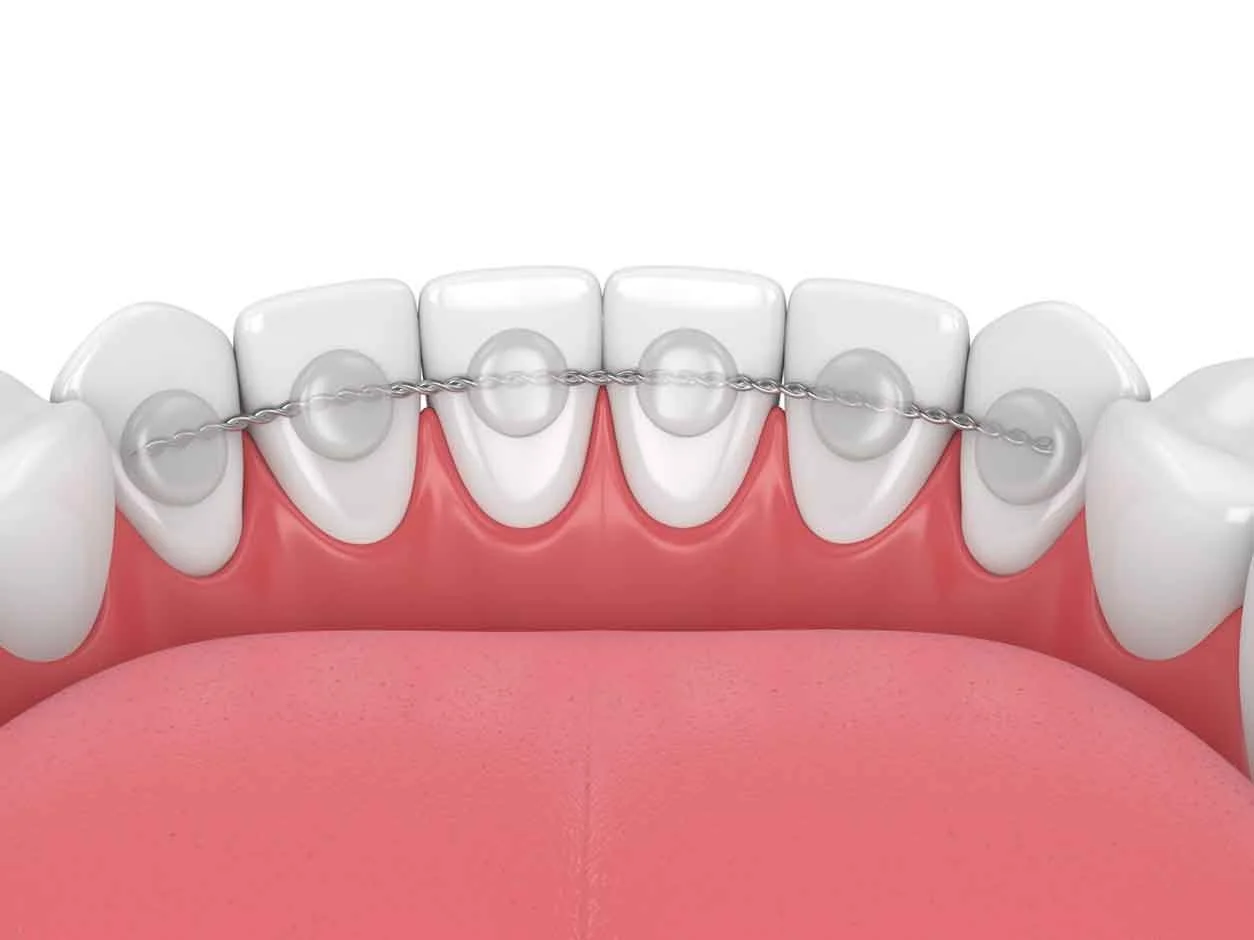Retainers For Teeth: A Comprehensive Teeth Retention Guide
In dental health, the significance of orthodontic treatments stands paramount. These treatments rectify misalignments and pave the way for enhanced oral health and a more confident smile. Among the various components of post-orthodontic care, retainers for teeth are crucial. They play a pivotal role in maintaining the alignment of teeth after removing fixed braces or aligners, ensuring that the benefits of orthodontic treatments are long-lasting.
Understanding The orthodontic retention procedures
Definition and Purpose of Retainers For Teeth
A permanent retainer and removable retainer are custom-made orthodontic devices primarily designed to preserve the position of teeth after braces or other orthodontic treatments. Their primary purpose is to stop teeth from gradually shifting back to their original position, a process known as relapse.
Retainers are integral to the post-orthodontic treatment phase, ensuring orthodontic corrections' long-term success and stability. They are vital in preserving the alignment and spacing achieved through braces, contributing to aesthetic appeal and improved oral health.
Types of Retainers
Retainers for teeth are broadly categorised into two types: permanent and removable retainers.
Removable Retainers
The removable retainer is the more common type and can be taken out of the mouth for eating and cleaning. There are two main types of removable retainers for teeth:
Hawley Retainers
This removable retainer is made of metal wires and acrylic, making Hawley retainers durable and adjustable. The metal wires wrap around the teeth, while the acrylic is moulded to fit comfortably inside the mouth. They are noticeable when worn but offer the advantage of being more durable and adjustable.
Clear Plastic Retainers
Often made from a transparent plastic material like polyurethane, this removable retainer is less visible than Hawley retainers. They fit snugly over the entire arch of teeth and are popular due to their aesthetic appeal. However, they may need replacing more frequently than their metal counterparts.
Fixed Retainers
Also known as bonded or permanent retainers, a fixed retainer consists of a thin metal wire that is permanently attached, or bonded, to the back of the teeth. Fixed retainers are typically used when there's a high risk of teeth reverting to their original position. These permanent retainers for teeth are not visible from the front and can remain in place for years, but require careful cleaning to maintain oral hygiene.
Brief History of Retainers in Orthodontic Treatment
The use of retainers in orthodontics has a rich history, dating back to the early 20th century. Initially, retainers were rudimentary and often uncomfortable, but they were crucial in maintaining dental alignment post-braces. The development of the Hawley retainer in the 1950s marked a significant advancement, offering a more tailored and effective approach to post-treatment care.
The late 20th and early 21st centuries saw further innovations with the introduction of clear plastic retainers, providing a more aesthetic and less noticeable option for patients. These advancements reflect the ongoing commitment within the field of orthodontics to improve patient comfort and treatment outcomes.
Advantages of Using Retainers
Maintenance of Teeth Alignment
Post-Orthodontic Stability: After the completion of orthodontic treatment, such as braces, retainers play a crucial role in maintaining the newly achieved alignment of teeth. This is essential because teeth naturally tend to shift back to their original position over time.
Long-Term Results: By wearing retainers as advised by dental professionals, individuals can ensure the longevity of their orthodontic results, thereby maximising the value of their investment in dental correction.
Prevention of Dental Movement
Age-Related Changes: As individuals age, their teeth may naturally shift. Retainers can help mitigate these changes, thus maintaining a straighter and more aesthetically pleasing dental arrangement.
Customised for Individual Needs: In the UK, dental practitioners often provide custom-made retainers tailored to fit each patient's unique dental structure, ensuring effective prevention of unwanted tooth movement.
Oral Health Benefits
Easier Cleaning: Straight teeth, maintained by using retainers, are easier to clean. This reduces the risk of dental problems such as tooth decay and gum disease, which are prevalent concerns in the UK.
Improved Hygiene: Retainers, especially removable ones, encourage better oral hygiene as they can be taken out for thorough cleaning.
Speech Improvement
Correcting Minor Speech Issues: For some individuals, retainers can aid in correcting slight speech impediments that are related to the positioning of teeth.
Cost-Effectiveness
Avoiding Further Orthodontic Treatment: By consistently using retainers to keep teeth straight, individuals can avoid the need for further orthodontic interventions in the future, which can be both costly and time-consuming.
Adaptability and Comfort
Technological Advancements: In the UK, the field of orthodontics has seen significant advancements, leading to more comfortable and less obtrusive retainer options.
Variety of Types: Various types of retainers for teeth are available, such as fixed and removable retainers, allowing for personalised choices based on lifestyle and comfort.
Disadvantages and Challenges
Discomfort and Adjustment Period: Many individuals initially experience discomfort when wearing a retainer. This discomfort is usually temporary and diminishes as one becomes accustomed to the device. The adjustment period can also include challenges with speech, as the presence of the retainer in the mouth can temporarily affect pronunciation. This adjustment period varies from person to person but is an important consideration, especially for those who engage in public speaking or similar activities.
Maintenance Requirements: Retainers require regular cleaning and maintenance to prevent bacteria and plaque build-up. Neglecting proper care can lead to oral hygiene issues, including bad breath and tooth decay. Removable retainers for teeth need to be cleaned daily with appropriate cleaning solutions, and fixed retainers require meticulous brushing and flossing to maintain oral hygiene. This added responsibility can be a challenge for some, particularly younger patients.
Risk of Loss or Damage for Removable Retainers: Removable retainers can be easily misplaced or damaged if not handled carefully. This is mainly a concern for younger users who may need to remember to store their retainers safely when not in use. Replacing a lost or damaged retainer can be costly and inconvenient. Additionally, if a retainer is not worn as prescribed during the replacement period, there is a risk of teeth shifting.
Long-term Commitment: The use of a teeth retainer is often a long-term commitment. In some cases, retainers may need to be worn indefinitely, especially at night, to ensure teeth remain in their correct position. This ongoing requirement is a disadvantage for those who wish for a less permanent solution to keep their teeth straight.
Potential for Speech Impediment: Particularly with fixed retainers, some individuals may experience a slight speech impediment. While this is usually temporary and improves with time, it can be a source of self-consciousness, especially in social or professional settings.
How retainers are used
Understanding the correct usage of retainers is crucial for ensuring their effectiveness in maintaining dental alignment post-orthodontic treatment. Here's an overview tailored for a UK audience:
Post-Braces Care: The most common use of a teeth retainer is immediately after the removal of braces. Once braces are removed, the teeth can shift back to their original positions. To prevent this, orthodontists typically prescribe retainers. The duration for which retainers must be worn varies depending on individual cases, but it is often a critical phase in orthodontic treatment.
Daily Wear Guidelines: Initially, many orthodontists recommend wearing a retainer full-time for a certain period, often several months to a year. This means the retainers should be worn at all times, except when eating, drinking anything other than water, or brushing teeth. Gradually, the wear time is reduced, and retainers are only required during sleeping hours.
Long-term Use: In some cases, mainly where significant dental corrections have been made, retainers may need to be worn for a longer period or indefinitely at night. This long-term use helps ensure that the teeth do not shift over time, maintaining the alignment achieved through orthodontic treatment.
Care and Maintenance: Proper care of retainers is essential. Removable retainers should be cleaned regularly using appropriate cleaning solutions to prevent bacteria and plaque build-up. Fixed retainers for teeth require diligent oral hygiene practices, including regular brushing and flossing, to maintain dental health.
Regular Check-ups: Regular dental check-ups are important for those using retainers. These appointments allow orthodontists to monitor the retainers' condition and the stability of the teeth alignment. Adjustments or replacements can be made if necessary.
Adherence to the Orthodontist's Instructions
Patients need to adhere strictly to the instructions provided by their orthodontist. This includes wearing the retainers as advised, attending follow-up appointments, and maintaining good oral hygiene. Non-compliance can lead to a relapse in teeth alignment, undermining the effectiveness of the orthodontic treatment.
If you have recently undergone treatment and would like to know more about how to maintain your beautiful smile with removable or permanent retainers, please don't hesitate to get in touch with us. We will be more than happy to discuss your options.
Retainer cost and considerations
Selecting the appropriate retainer is a crucial decision in the orthodontic treatment journey. This choice should be made considering individual needs, lifestyle, and the specific advice of an orthodontist. Here's an in-depth look at the factors to consider:
The first and most important step is to consult a qualified orthodontist. They can provide expert advice based on the specific orthodontic treatment you have received, the current alignment of your teeth, and any particular oral health considerations. Orthodontists in the UK are well-equipped to recommend the most suitable type of retainer, considering the latest advancements and practices in orthodontic care.
Types of Retainers and Suitability
Removable Retainers: Ideal for those who prefer ease of cleaning and a less permanent option. They are suitable for patients who can commit to wearing them as prescribed. Clear plastic retainers for teeth are often chosen for their aesthetic appeal, while Hawley retainers are preferred for their durability and adjustability.
Fixed Retainers: Best suited for patients at high risk of teeth shifting and those looking for a 'fit and forget' solution. They are particularly recommended when consistent retainer wear might be challenging.
Personal Needs and Lifestyle Considerations
Aesthetics: For those concerned about the visibility of their retainer, clear plastic retainers offer a discreet option.
Comfort and Convenience: Some individuals may find fixed retainers more comfortable as they do not require removal and reinsertion.
Maintenance and Hygiene: Removable retainers for teeth require diligent cleaning routines, which might be a consideration for those seeking low-maintenance options.
Long-term Commitment and Compliance: A retainer's effectiveness largely depends on the user's commitment to wearing it as prescribed. It's important to realistically assess one's ability to adhere to the wearing schedule, especially with removable retainers.
Cost Considerations: As discussed previously, the cost of retainers can vary. It's important to consider both the initial cost and any potential long-term expenses, such as replacements for removable retainers.
Potential for Adjustments: Retainers may need adjustments or replacements over time. This is more common with removable retainers for teeth, which can wear out or lose their fit.
Follow-up Care: Regular follow-up appointments with the orthodontist are crucial, regardless of the type of retainer chosen. These appointments allow for monitoring and adjustments as needed to ensure the continued effectiveness of the retainer.



